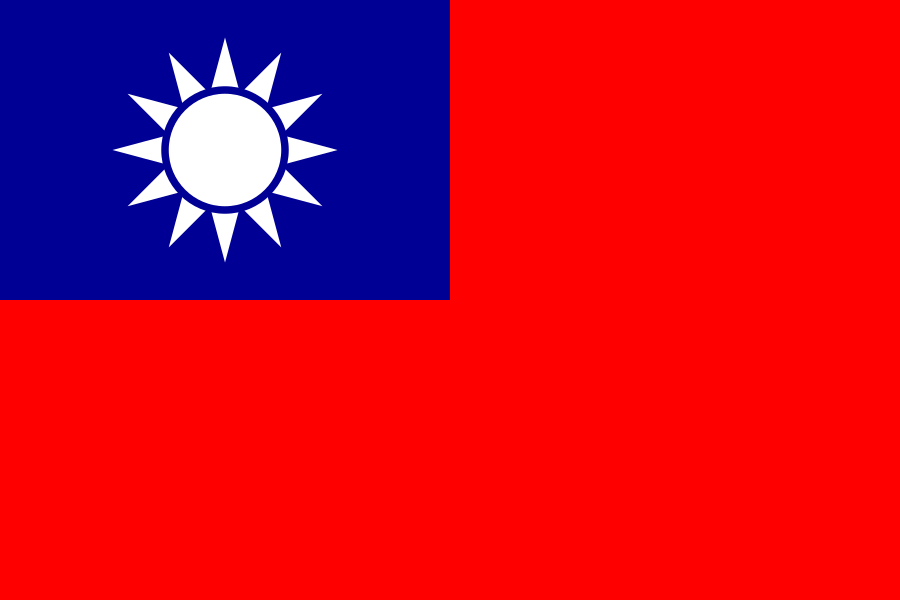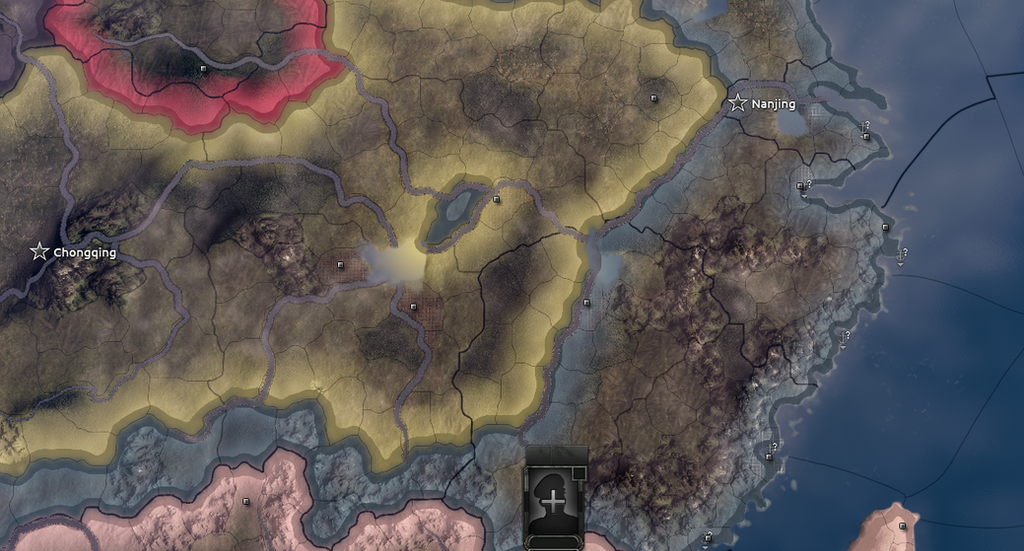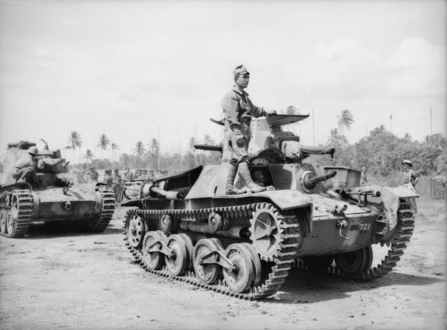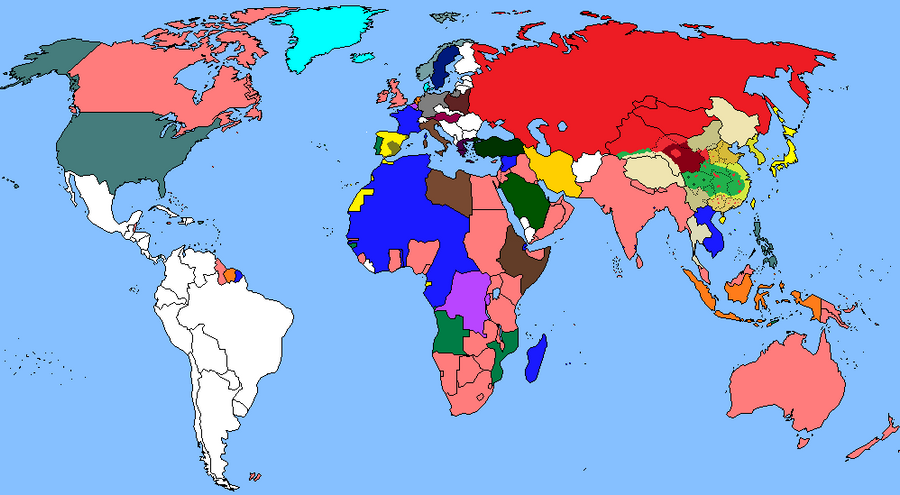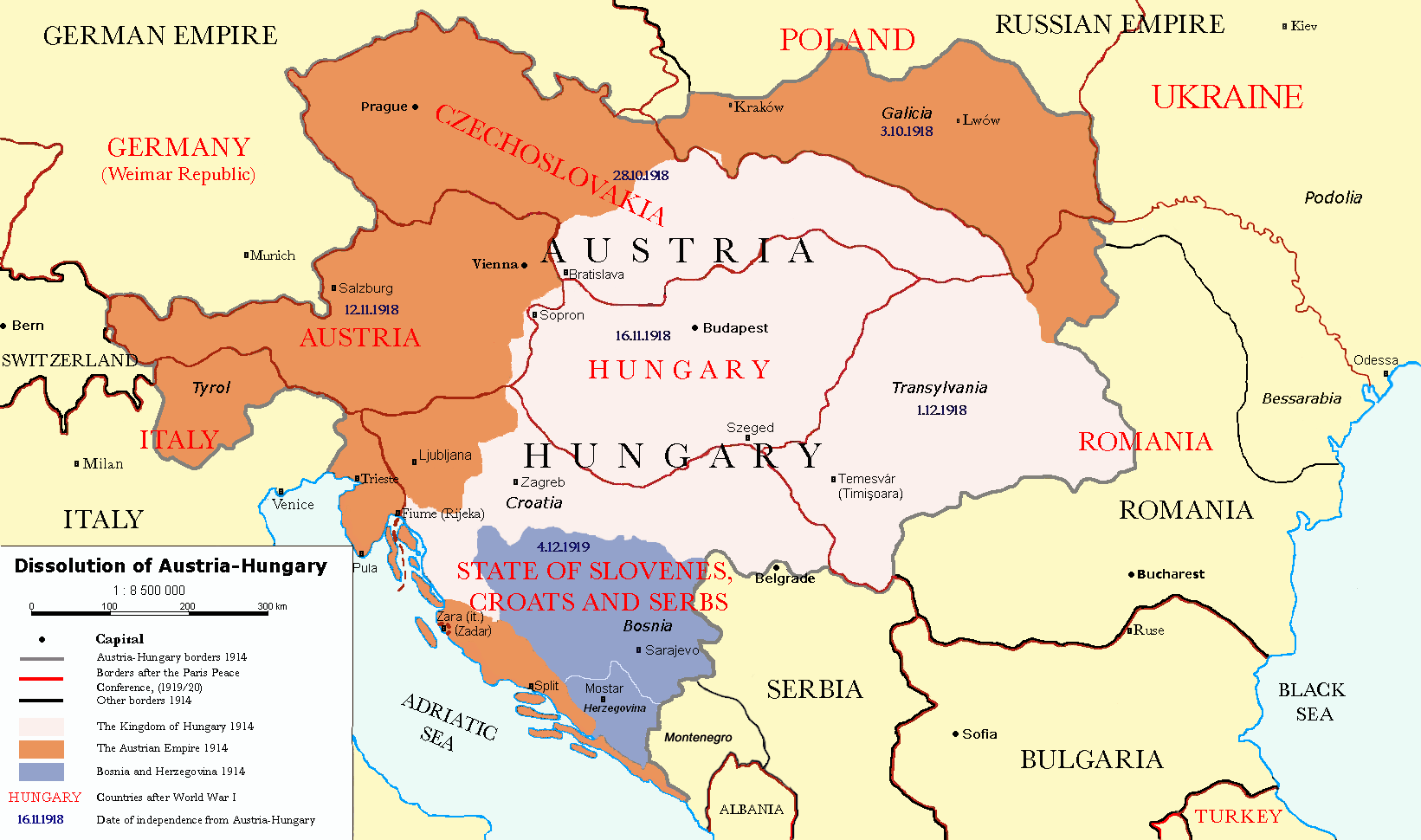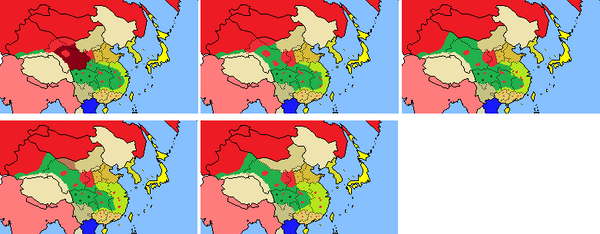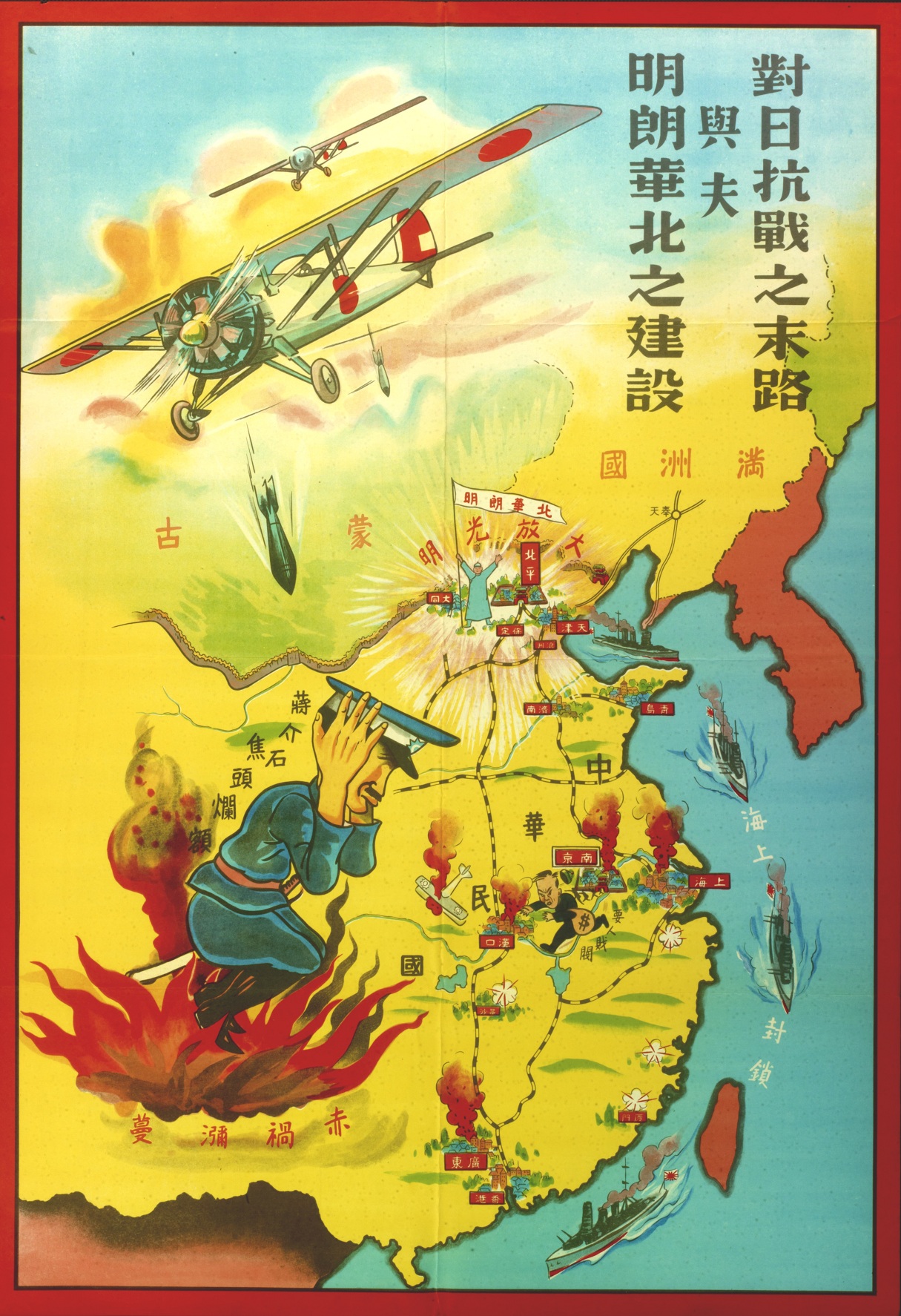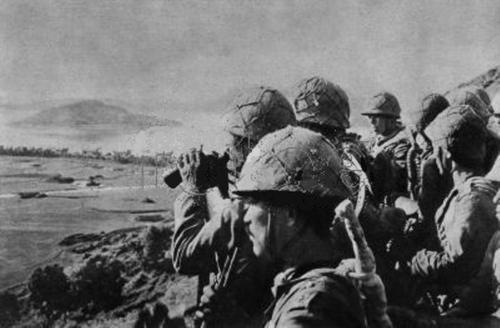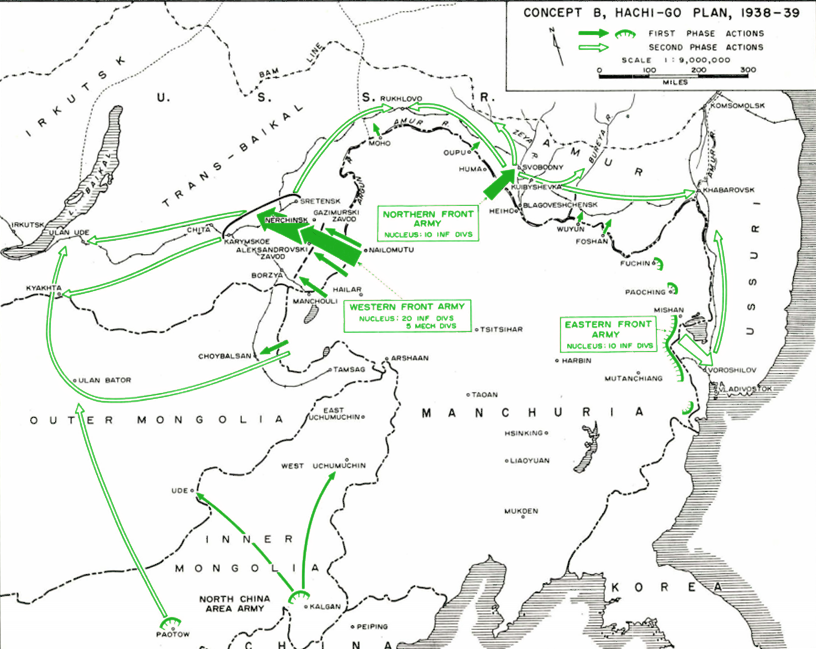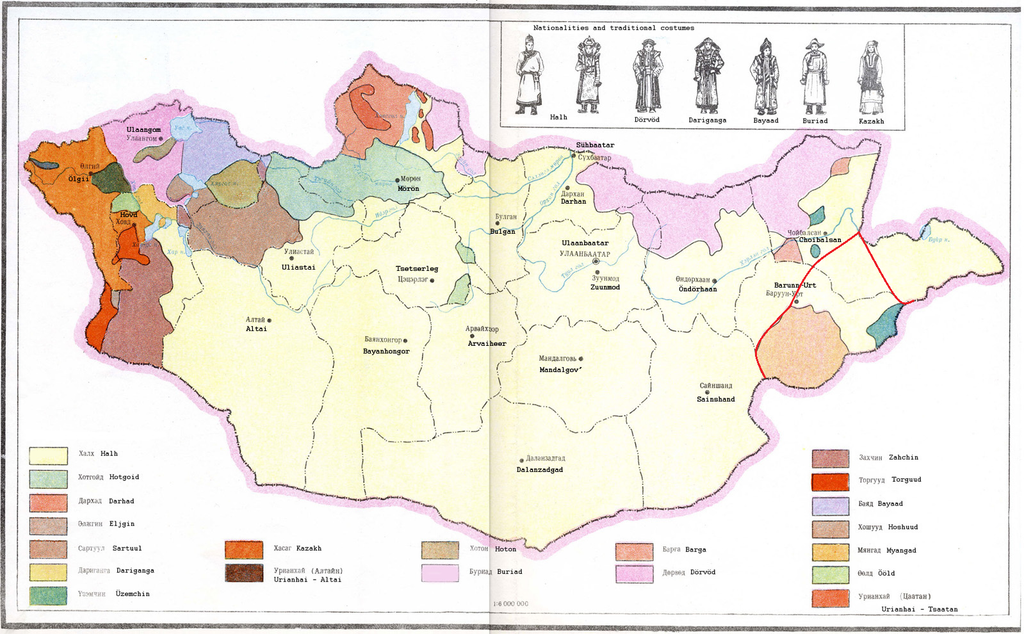Chapter 17: The Soviet – Co-Prosperity Sphere border conflicts:
The Soviet – Co-Prosperity Sphere border conflicts (also known as the Soviet-Japanese Border War) was a series of battles and skirmishes between the forces of the Union of Socialist Republics and the Co-Prosperity Sphere (mostly the Empire of Japan), as well as their respective puppet states of Mongolia, Mengjiang and Manchukuo. Lasting from 1932 to 1939, most of the conflicts were small border skirmishes until May 1939, with the notable exception of the Battle of Lake Khasan. The Border War was resolved in a series of engagements at Khalin-Gol, where the Co-Prosperity Sphere forces inflicted a decisive defeat on the Soviets. This resulted in a change of the Mongolian border and the Soviet – Co-Prosperity Sphere Neutrality Pact.
Following the Japanese invasion of Manchuria in 1931, violations of the vaguely defined Manchukuo-Mongolia-USSR border were frequent. Most of these were misunderstandings, but some were intentional acts of espionage. According to the IJA, between 1932 and 1934, 152 border disputes occurred, largely because the Soviets found it necessary to gather intelligence inside Manchuria. For their part, the Soviets blamed the Japanese for 15 cases of border violation, 6 air intrusions, and 20 episodes of "spy smuggling" in 1933 alone. Hundreds more violations were reported by both sides throughout the following years. To make matters worse, Soviet – Co-Prosperity Sphere diplomacy and trust had declined even further in these years, with the members of the Co-Prosperity Sphere being openly called "fascist enemies" at the Seventh Comintern Congress in July 1935.
In 1937, the Japanese and the Co-Prosperity Sphere helped out Wang Jingwei's Government China, during the Chinese Civil War. During the first two years of the war, the Soviets heavily aided the Chinese Government of Chiang and the Chinese Communists, increasing tensions with Japan. From October 1937 to September 1939, the Soviets supplied the Chinese United Front with 82 tanks, over 1,300 pieces of artillery, over 14,000 machine guns, 50,000 rifles, 1,550 trucks and tractors, and also ammunition, equipment and supplies. They also provided 3,665 military advisers and "volunteers". 195 of these men, almost all officers, died in battle against Japanese forces. Large-scale aid ceased by the end of the Soviet-Japanese border wars.
In early 1935, the first shooting affray took place. From then until April 1939, the Imperial Japanese Army recorded 108 such incidents. On 8 January 1935, the first armed clash, Halhamiao incident occurred on the border between Mongolia and Manchukuo. Several dozen Mongolian cavalry trespassed in Manchuria near some disputed fishing grounds, and engaged an 11-man Manchukuo army patrol unit near the Buddhist temple at Halhamiao, which was led by a Japanese military advisor. The Manchukuo Army incurred slight casualties, suffering 6 wounded and 2 dead, including the Japanese officer. The Mongols suffered no casualties, and withdrew when the Japanese sent a punitive expedition to reclaim the disputed area. Two motorized cavalry companies, a machine gun company, and a tankette platoon were sent and occupied the point for three weeks without resistance.
In June 1935, the Japanese and Soviets directly exchanged fire for the first time. West of Lake Khanka, an 11-man Japanese patrol was attacked by 6 Soviet horsemen, supposedly inside Manchukuoan territory. In the ensuring firefight, one Soviet soldier was killed, and two horses were captured. While the Japanese asked the Soviets for a joint investigation of the issue, the Soviets rejected the request.
In October 1935, 9 Japanese and 32 Manchukuoan border guards were engaged in setting up a post, about 20 kilometers north of Suifenho, when they were attacked by a force of 50 Soviet soldiers. The Soviets opened fire on them with rifles and 5 heavy machine guns. In the ensuing clash, 2 Japanese and 4 Manchukuoan soldiers were killed, and another 5 were wounded. The Manchukuoan foreign affairs representative lodged a verbal protest with the Soviet consul at Suifenho. The Kwantung Army also sent an intelligence officer to investigate the scene of the clash.
On 19 December 1935, a Manchukuoan army unit engaging in a reconnoitering project southwest of Buir Lake clashed with a Mongolian party, reportedly capturing 10 soldiers. Five days later, 60 truck-borne Mongolian troops assaulted the Manchukuoans and were repulsed, at the cost of 3 Manchukuoan dead. The same day, at Brunders, Mongolian soldiers attempted to drive out Manchukuoan forces three times in the day, and then again at a night. All attempts failed. More small attempts to dislodge the Manchukuoans from their outposts occurred in January, with the Mongolians this time utilizing planes for recon duty. Due to the arrival of a small force of Japanese troops in three trucks, these attempts also failed with a few casualties on both sides. Aside from the 10 prisoners taken, Mongolian casualties during these clashes are unknown.
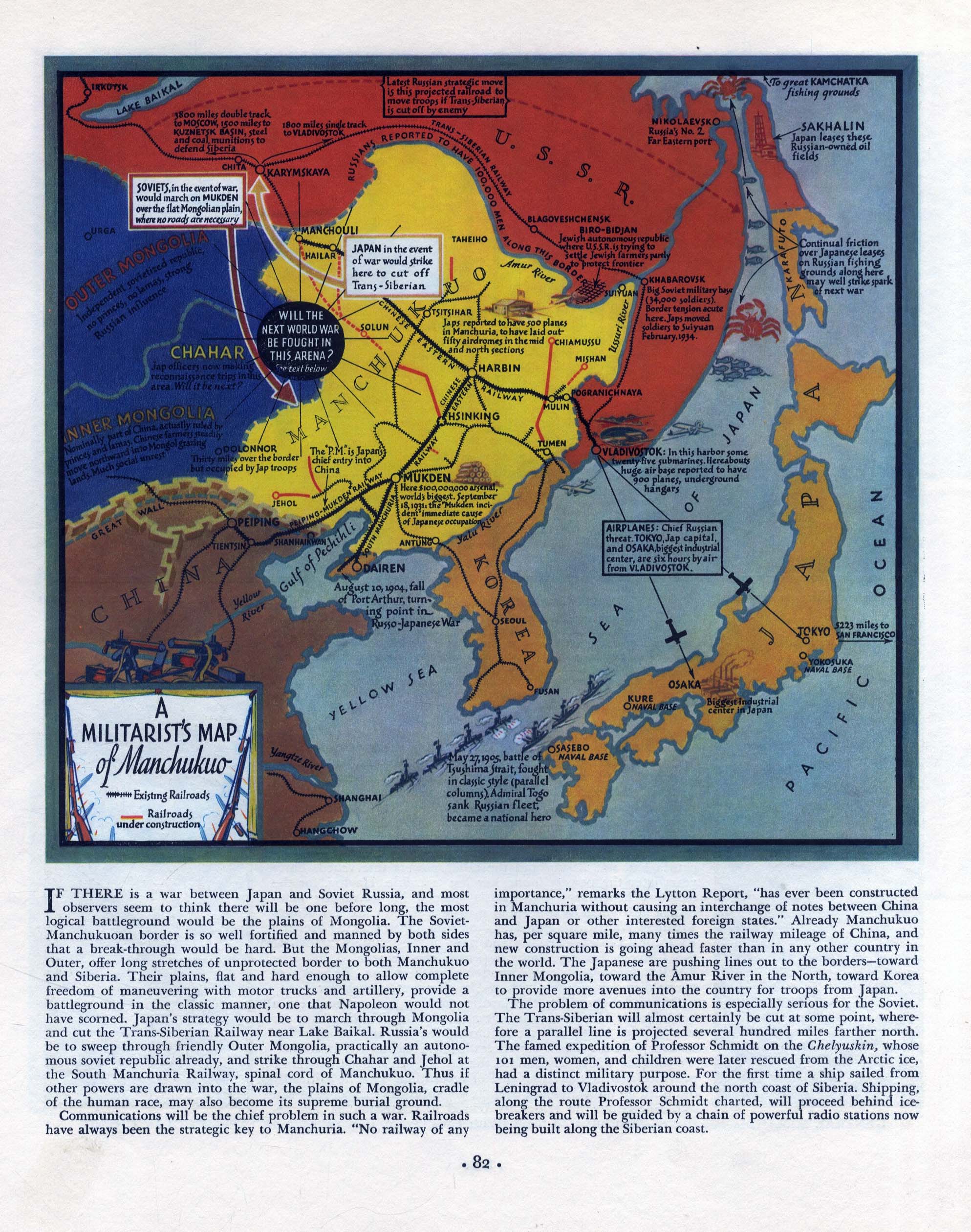
In February 1936, Lt. Col. Sugimoto Yasuo was ordered to form a detachment from the 14th Cavalry Regiment and, in the words of Lt. Gen Kasai Heijuro, "out the Outer Mongol intruders from the Olankhuduk region". Sugimoto's detachment included cavalry guns, heavy machine guns, and tankettes. Arrayed against him were 140 Mongolians, equipped with heavy machine guns and light artillery. On February 12, Sugimoto's men successfully drove the Mongolians south, at the cost of 8 men killed, 4 men wounded, and 1 tankette destroyed. After this, they began to withdraw, but were attacked by 5-6 Mongolian armored cars and 2 bombers, which briefly wreaked havok on a Japanese column. This was rectified when the unit obtained artillery support, enabling it to destroy or drive off the armored cars.
In March 1936, the Tauran incident occurred. In this battle, both the Japanese Army and Mongolian Army used a small number of armored fighting vehicles and military aircraft. The Tauran incident of March 1936 occurred as the result of 100 Mongolian and 6 Soviet troops attacking and occupying the disputed village of Tauran, Mongolia, driving off the small Manchurian garrison in the process. They were supported by a handful of light bombers and armored cars, though their bombing sorties failed to inflict any damage on the Japanese, and three of them were shot down by Japanese heavy machine guns. Local Japanese forces counter-attacked, running dozens of bombing sorties on the village, and eventually assaulting it with 400 men and 10 tankettes. The result was a Mongolian rout, with 56 soldiers being killed, including 3 Soviet advisors, and an unknown number being wounded. Japanese losses amounted to 27 killed and 9 wounded.
Later in March 1936, there was another border clash, this time between the Japanese and the Soviets. Reports of border violations led the Korea Army to send ten men by truck to investigate, but this party itself was ambushed by 20 NKVD soldiers deployed at a point 300 meters inside the territory claimed by the Japanese. After incurring several casualties, the IJA patrol withdrew, and brought up 100 men within hours as reinforcements, who then drove off the Soviets. However, fighting erupted later in the day when the NKVD also brought reinforcements. By nightfall, the fighting had stopped and both sides had pulled back. The Soviets agreed to return the bodies of 2 Japanese soldiers who died in the fighting, which was seen as encouraging by the Japanese government.
In early April 1936, three Japanese soldiers were killed near Suifenho, in one of many minor and barely-documented affrays. However, this incident was notable in that the Soviets again returned the bodies of the dead IJA servicemen.
In June 1937, the Kanchazu Island incident occurred on the Amur River (Soviet–Manchukuo border). Three Soviet gunboats crossed the center line of the river, unloaded troops, and occupied Kanchazu (also spelled "Kanchatzu") island. Soldiers from the IJA 1st Division, using two horse-drawn 37mm artillery pieces, proceeded to hastily set up improvised firing sites, and load their guns with both high-explosive and armor-piercing shells. They shelled the Soviets, sinking the lead gunboat, crippling the second, and driving off the third. Japanese troops then fired on the swimming crewmen of the sunken ships with machine guns. 37 Soviet soldiers were killed in this incident; the Japanese forces suffered no casualties. The Japanese Ministry of Foreign Affairs protested and demanded the Soviet soldiers withdraw from the island. The Soviet leadership, apparently shocked by the display and not wanting things to escalate, agreed and evacuated their forces.
The Battle of Lake Khasan (July 29, 1938 – August 11, 1938) and also known as the Changkufeng Incident in China and Japan, was an attempted military incursion from Manchukuo (by the Japanese) into territory claimed by the Soviet Union. This incursion was founded in the belief of the Japanese side that the Soviet Union misinterpreted the demarcation of the boundary based on the Convention of Peking treaty between Imperial Russia and the former Qing-Dynasty China (and subsequent supplementary agreements on demarcation), and furthermore, that the demarcation markers had been tampered with. The Japanese 19th division expelled a Soviet garrison from the disputed area, and repulsed numerous counterattacks by an overwhelmingly more numerous and heavily armed Soviet force. Both sides took heavy losses, though Soviet casualties were nearly three times higher than Japanese casualties, and they lost dozens of tanks. The conflict was resolved diplomatically on August 10, when the Japanese ambassador in Moscow asked for peace. The Japanese troops withdrew the next day, and the Soviets again occupied the now-empty area.

With Soviet Russia occupied in Europe by the reborn Empires of Germany and Austria-Hungary and their newly formed Dual Alliance that in forms looked just like the Central Power Pact that so heavily battled the Zardom of Russia in the First Great War the Japanese led Armies of Manchukuo and Mengjian (who by now were agitating very independent from the Army Command in Japan, just like the armies in China), as well as their respective government used this opportunity to expand their territory on costs of the Mongolian People's Republic. Parts of their armies crossed the boarder into Mongolia in the hope to gain more land. This led to the Battles of Khalkhyn Gol.
The Battles of Khalkhyn Gol were the decisive engagements of the undeclared Soviet – Co-Prosperity Sphere border conflicts fought among the Soviet Union, Mongolia, Japan, Manchukuo and Mengjian in 1939. The conflict was named after the river Khalkhyn Gol, which passes through the battlefield. In Japan, the decisive battle of the conflict is known as the Nomonhan Incident after a nearby village on the border between Mongolia and Manchuria. The battles resulted in the defeat of the Soviet-Mongolian Army of the 57th Special Corps.
In 1939, Manchuria was a puppet state of Japan known as Manchukuo, and Mongolia was a communist state allied with the Soviet Union, known as the Mongolian People's Republic. The Japanese maintained that the border between Manchukuo and Mongolia was the Khalkhyn Gol (English "Khalkha River") which flows into Lake Buir and hoped to expend their puppet of Manchukuo and Mendjian further into Mngolia. In contrast, the Mongolians and their Soviet allies maintained that the border ran some 16 kilometres (9.9 mi) east of the river, just east of Nomonhan village. The principal occupying army of Manchukuo was the Kwantung Army of Japan, consisting of some of the best Japanese units in 1939. However, the western region of Manchukuo was garrisoned by the relatively newly formed 23rd Infantry Division at Hailar under General Komatsubara and included several Manchukuoan army and border guard units all under the direct command of Sixth Army.
The Soviet forces consisted of the 57th Special Corps, deployed from the Trans-Baikal Military District. They were responsible for defending the border between Siberia and Manchuria. The Mongolian troops mainly consisted of cavalry brigades and light artillery units, and proved to be effective and agile, but lacked armor and manpower in sufficient numbers.
In 1939, the Japanese Cabinet sent instructions to the Kwantung Army to strengthen and fortify Manchukuo's borders with Mongolia and the Soviet Union. Additionally, the Kwantung Army, which had long been stationed in Manchuria far from the Japanese home islands, had become largely autonomous and tended to act without approval from, or even against the direction of, the Japanese government.
The incident began on 11 May 1939. A Mongolian cavalry unit of some 70–90 men had entered the disputed area in search of grazing for their horses. On that day, Manchukuoan cavalry attacked the Mongolians and drove them back across the river Khalkhin Gol. On 13 May, the Mongolian force returned in greater numbers and the Manchukoans were unable to dislodge them.
On 14 May, Lt. Col. Yaoza Azuma led the reconnaissance regiment of the 23rd Infantry Division, supported by the 64th Infantry Regiment of the same division, under Colonel Takemitsu Yamagata, into the territory and the Mongolians withdrew. Soviet and Mongolian troops returned to the disputed region, however, and Azuma's force again moved to evict them. This time things turned out differently, as the Soviet-Mongolian forces surrounded Azuma's force on 28 May and destroyed it. The Azuma force suffered eight officers and 97 men killed and one officer and 33 men wounded, for 63% total casualties.
Both sides began building up their forces in the area. Soon, Japan had 30,000 men in the theater. The Soviets dispatched a new corps commander, Comcor Georgy Zhukov, who arrived on 5 June and brought more motorized and armored forces (I Army Group) to the combat zone. Accompanying Zhukov was Comcor Yakov Smushkevich with his aviation unit. J. Lkhagvasuren, Corps Commissar of the Mongolian People's Revolutionary Army, was appointed Zhukov's deputy.
On 27 June, the Japanese Army Air Force's 2nd Air Brigade struck the Soviet air base at Tamsak-Bulak in Mongolia. The Japanese won this engagement, but the strike had been ordered by the Kwantung Army without getting permission from Imperial Japanese Army (IJA) headquarters in Tokyo. In an effort to prevent the incident from escalating, Tokyo promptly ordered the JAAF not to conduct any more air strikes against Soviet airbases. Throughout June, there were reports of Soviet and Mongolian activity on both sides of the river near Nomonhan and small-scale attacks on isolated Manchukoan units. At the end of the month, the commander of the 23rd Japanese Infantry Division, Lt. Gen. Komatsubara, was given permission to "expel the invaders".
The Japanese plan was for a two-pronged assault. The first attack would be made by three regiments plus part of a fourth: 71st and 72nd Infantry Regiment (23rd Division), a battalion of the 64th Infantry Regiment and the 26th Infantry Regiment under Colonel Shinichiro Sumi (7th Infantry Division). This force would advance across the Khalkin Gol, destroy Soviet forces on Baintsagan Hill on the west bank, then make a left turn and advance south to the Kawatama Bridge. The second prong of the attack would be the task of the IJA 1st Tank Corps (1st TC) (Yasuoka Detachment), consisting of the 3rd and 4th Tank Regiments, plus a part of the 64th Infantry Regiment, a battalion from the 28th Infantry Regiment, detached from the 7th Infantry, 24th Engineer Regiment, and a battalion from the 13th Field Artillery Regiment, all under the overall command of Lieutenant General Yasuoka Masaomi. This force would attack Soviet troops on the east bank of the Khalkhyn Gol and north of the Holsten River. The two Japanese thrusts were to join together on the wings.
The northern task force succeeded in crossing the Khalkhyn Gol, driving the Soviets from Baintsagan Hill, and advancing south along the west bank. However, Zhukov, perceiving the threat, launched a counterattack with 450 tanks and armored cars. The tanks consisted of primarily BTs with a handful of T-26s, while the armored cars were BA-10s and BA-3/6s, which were similar in armor (6–15 mm (0.24–0.59 in)) and armament (main: 45 mm (2 in) gun 20K mod, secondary: two 7.62 mm (0.30 in) machine guns) to the Soviet light tanks. The Soviet armored force, despite being unsupported by infantry, attacked the Japanese on three sides and nearly encircled them. The Japanese force, further handicapped by having only one pontoon bridge across the river for supplies, was forced to withdraw, recrossing the river on 5 July. Meanwhile, the 1st Tank Corps of the Yasuoka Detachment (the southern task force) attacked on the night of 2 July, moving in the darkness to avoid the Soviet artillery on the high ground of the river's west bank. A pitched battle ensued in which the Yasuoka Detachment lost over half its armor, but still could not break through the Soviet forces on the east bank and reach the Kawatama Bridge. After a Soviet counterattack on 9 July threw the battered, depleted Yasuoka Detachment back, it was dissolved and Yasuoka was relieved. Overall, the Japanese lost 42 tanks in these encounters, primarily to 45 mm gunfire, which outranged the Japanese weapons. In return, on 3 July alone the Soviet-Mongolian side lost a total of 77 tanks and 45 armored cars out of a total of 93 and 59 committed to the fight, respectively.
The two armies continued to spar with each other over the next two weeks along a four-kilometre (2.5 mi) front running along the east bank of the Khalkhyn Gol to its junction with the Holsten River. Zhukov, whose army was 748 km (465 mi) away from its base of supply, assembled a fleet of 2,600 trucks to supply his troops, while the Japanese suffered did the same thanks to their motorized transports. On 23 July, the Japanese launched another large-scale assault, sending the 64th and 72nd Infantry Regiments against Soviet forces defending the Kawatama Bridge. Japanese artillery supported the attack with a massive barrage that consumed more than half of their ammunition stores at the start over a period of two days. The attack made some progress and break through Soviet lines and reach the bridge. The Soviets disengaged from the attack on 25 July due to mounting casualties heavy enemy artillery fire. By this point the Japanese had suffered over 5,000 casualties between late May and 25 July being replaced by Manchukuoan and Mengjian reinforcements. The battle drifted into a stalemate, but similar Manchukuo and Mengjian attacks on other parts of the boarder prevented heavier Soviet reinforcements at Khalkhyn Gol.
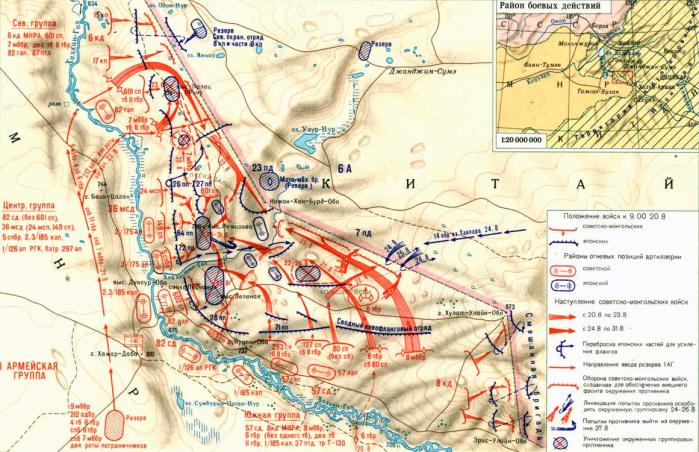
With war apparently imminent in Europe, Zhukov planned a final major offensive on 20 August to clear the Japanese from the Khalkhin Gol region and end the fighting. Zhukov, using a fleet of at least 4,000 trucks (IJA officers with hindsight dispute this, saying he instead used 6,000 to 10,000 motor vehicles) transporting supplies from the nearest base in Chita (600 kilometres (370 mi) away) assembled a powerful armored force of the 4th tank brigade, and the 7th mechanized brigades (which were armored car units with attached infantry support). This force was allocated to the Soviet left and right wings. The entire Soviet force consisted of two rifle divisions, one tank divisions and one additional tank brigades (in all, some 259 BT-5 and BT-7 tanks), one motorized infantry divisions, and over 550 fighters and bombers. The Mongolians committed two cavalry divisions.
In comparison, at the point of contact the Kwantung Army had General Komatsubara's 23rd Infantry Division, which with various attached forces was equivalent to two light infantry divisions. Its headquarters had been at Hailar, over 150 km (93 mi) from the fighting. Japanese intelligence, demonstrating the ability to accurately track the build-up of Zhukov's force, and managed to precipitate an appropriate response from below, thereby slowing down his supplies and overall numbers. Thus, when the Soviets finally did launch their offensive, Komatsubara was well prepared. To test the Japanese defenses prior to their main assault on 20 August, the Soviets launched three aggressive probing assaults, one on 3 August and the others on 7/8 August. All three were disastrously thrown back, with around 1,000 combined dead and several tanks knocked out on the Soviet side compared to just 85 Japanese casualties. Moreover, the Japanese counter-attacked and routed elements of the Mongolian 8th Cavalry Division, seizing a hilly sector of the battlefront. Despite the fact that no more major fighting would take place until 20 August, Japanese casualties continued to mount at a rate of 20 wounded per day. Zhukov's Army staff officers were becoming increasingly worried over the disorganized state his Army's and it's supply elements. In addition, the growing casualty count meant that the already weakened forces would have to wait for reinforcements that were only slowly arriving. This good start led to the desire in Tokyo's to escalate the fighting at Khalkhin-Gol and continuing the pressure on the Soviets.
Zhukov decided it was time to break the stalemate. At 05:45 on 20 August 1939, Soviet artillery and 275 aircraft attacked Japanese positions, the first fighter–bomber offensive in Soviet Air Force history. Approximately 27,000 Soviet and Mongolian soldiers of the 57th Special Corps defended the east bank of the Khalkhyn Gol. Three infantry divisions and a tank brigade crossed the river, supported by massed artillery and the Soviet Air Force. While the Japanese were pinned down by the attack of Soviet center units, Soviet armored units tried to swept around the flanks and attacked the Japanese in the rear, trying to achieving a classic double envelopment. When the Soviet wings could not managed to advance and link up at Nomonhan village their attack was stopped by the Japanese defense lines on 25 August, by the Japanese 23rd Infantry Division was trapped. On 26 August, a Japanese counterattack pushed back the Soviet advance up to this point. On 27 August, the 23rd Division pushed back the soviet-mongolian army and stabilized it's front fighting the enemy artillery with their own. By 31 August, Japanese forces on the Mongolian side of the border managed to advance, nearly crushing all remains of Zhukov's army in their offensive.
Zhukov realized the outcome of the battle and feared to be surrounded himself, retreating his forces. He hoped to reunite with the remaining troops at Chita to begin a new counteroffensive, but this was canceled then a ease-fire was signed in Moscow. While Zhukov was defeated by the Japanese forces on Mongolian territory, Joseph Stalin had to worry about the guarantees and alliance proposal the German and Austria-Hungarian Empire had given to Poland, Finland, Romania and the Baltic States. With the Soviet defend at Nomonhan, Stalin decided realized that the situation in Europe was too critical to further supply much more material and troops to the Chinese United Front or his puppets like Mongolia at the moment. To be free from any further threat of a second front from Japan an the Co-Prosperity Sphere for now, Stalin hoped to once again become free to concentrate on war in Europe. So the Soviet Union and Japan agreed to a cease-fire on 15 September, which took effect the following day 1:10 pm. Free from a threat in the Far East, Stalin proceeded with preparations for the rise of the New Central Powers (as he called Germany, Austria-Hungary and later the Italian Empire by now) in Europe on 17 September. Sadly for him and the Comintern the Republicans/Socialists/Communists lost the Spanish Civil War against General Francisco Franco and his Monarchists/Nationalists.
Japanese records report losses for this battle as 8,440 killed, 8,766 wounded, 162 aircraft lost in combat, and 42 tanks lost (of which 29 were later repaired and redeployed). Due to a military doctrine that prohibited surrender, the Japanese listed most of these men that were taken prisoners during the fight as killed in action, for the benefit of their families. Some sources put the Japanese casualties at 45,000 or more killed, with Soviet casualties of at least 25,000. However, these estimates for Japanese casualties are considered inaccurate as they exceed the total strength of the Japanese forces involved in the battle (estimated at 28,000–38,000 troops, despite Soviet claims that they were facing 75,000). According to the records of the Bureau 6A hospital, the Japanese casualties amounted to 7,696 killed, 8,647 wounded, 1,021 missing, and 2,350 sick, for a total of 19,714 personnel losses, including 2,895 Manchukuoan casualties. The Kwantung Army headquarters and their records give a slightly different figure of 8,629 killed and 9,087 injured. The Soviets initially claimed to have inflicted 29,085 casualties on the Japanese, but later increased this to 61,000 for the official histories.
The Soviets initially claimed 9,284 total casualties, which was almost certainly reduced for propaganda purposes. In recent years, with the opening of the Soviet archives, a more accurate assessment of Soviet casualties has emerged, citing 14,974 killed and 29,251 wounded. In the newer edition, the Soviet losses are given as 18,703 killed and missing (12,472 killed and died of wounds during evacuation, 2,152 died of wounds in hospitals, 16 died of disease, 4,028 missing, 83 non-combat dead), 30,952 wounded and sick, and a further 4,225 hospitalizations due to disease, a total of 43,880 casualties. In addition to their personnel losses the Soviets lost a large amount of materiel including 253 tanks, 250 aircraft (including 208 in combat), 96 artillery pieces, and 133 armored cars. Of the Soviet tank losses, 75–80% were destroyed by anti-tank guns, 15–20% by field artillery, 5–10% by infantry-thrown incendiary bombs, 2–3% by aircraft, and 2–3% by hand grenades and mines. The large number of Soviet armor casualties are reflected in the manpower losses for Soviet tank crews. A total of 1,559 Soviet "Tank Troops" were killed or wounded during the battles. Many of this left over Tanks and Artillery was later used by the Armeis of Manchukuo and Mengjian to increase their strength in the Far East. Mongolian casualties were 956–1.890, with at least 22 armored cars destroyed and 2,821 horses/camels lost.
Nomonhan was the first use of airpower on a massive scale in a high intensity battle to obtain a specific military objective. The combatants remained at peace from this day onward, neither wanting to risk any further border incidents that could escalate into a full out Soviet – Co-Prosperity Sphere war at this moment. Combat losses include aircraft shot down during aerial combat, written off due to combat damage or destroyed on the ground. Non-combat losses include aircraft that were lost due to accidents, as well as write-offs of warplanes due to the end of their service life. Thus Soviet combat losses amount to 163 fighters, 44 bombers and a reconnaissance aircraft, with further 385 fighters and 51 bombers requiring repairs due to combat damage. VVS (Soviet Air Forces) personnel losses were 88 killed in aerial combat, 11 killed by anti-aircraft artillery, 65 missing, six killed in air-strikes and four dead of wounds (174 total) and 113 wounded. The Japanese combat losses were 97 fighters, 25 bombers and 41 other (mostly reconnaissance), while 128 fighters, 54 bombers and 38 other required repairs due to combat damage. The Japanese air-force suffered 152 dead and 66 seriously wounded.
While this engagement is little known in the West, it played an important part in subsequent Japanese conduct in the Second Great War. The battle earned the Kwantung Army the praise of officials in Tokyo, but also displeasure not so much due to its victory, but because it was initiated and escalated without direct authorization from the Japanese government. This victory combined with the advance of Wang Jingwei's and Co-Prosperity Sphere forces in the Chinese Civil War together with the anti-Soviet alliance formed by the German Empire, Austria-Hungary and Italy in Europe together with the IJA's basis of a war policy against the USSR, moved the Imperial General Staff in Tokyo a little closer towards the the policy of the North Strike Group favored by the Army, which wanted to seize Siberia for its resources as far as Lake Baikal.
Despite this, the South Strike Group, favored by the Navy, which wanted to seize the resources of Southeast Asia, especially the petroleum and mineral-rich Dutch East Indies still did not give up their dream of expending Japan and the Co-Prosperity Sphere. Masanobu Tsuji, the Japanese colonel who had helped instigate the Nomonhan incident, was one of the strongest proponents of the continued push into China, central Asia and Sibiria. Even General Ryukichi Tanaka, Chief of the Army Ministry’s Military Service Bureau in 1941, testified that, "the most determined single protagonist in favor of war with the Soviet Union was Tsuji Masanobu." Tsuji later wrote that his experience of Soviet defeat at Nomonhan convinced him to attack the Soviet Union whenever the situation in Europe would favor this assault to secure the Japanese back before striking against the Colonial Powers in the south. On 24 June 1941, two days after the war on the Eastern Front broke out, the Japanese army and navy leaders adopted a resolution of intervening in the Central Powers/ Axis - Soviet by continue the growing of their Co-Prosperity Sphere puppet states of Manchukuo and Mengjian by pushing further into Mongolia or Xianjiang.

(Kantokuen Plan 1)
But for now the Co-Prosperity Sphere (led by Japan) and the Soviet Union and their allies/vassals and puppets signed a neutrality pact to stop the boarder incidents from escalating into a full war between both powers. While in Tokio the Kwantung Army Special Maneuvers Plan (Kantokuen) was planned with the goal of a a potential war against the USSR the two countries signed agreements that redraw the borders of Mongolia, Mengjiang and Manchukuo in favor of the Co-Prosperity Sphere for now, while at the same time and pledging neutrality towards each other for the future.
The battle was a serious loss for Soviet general Georgy Zhukov, later leading to his executed in the 1941 Purges. Following the battle, the Soviets generally found the results very unsatisfactory. Similar the Japanese felt the same despite their victory as some have hoped to gain more land and influence in Mongolia. As noted by Pyotr Grigorenko, the Red Army tried to concentrate on a large advantage in technology, numbers, and firepower, to compensate for the poor battle outcome, which Stalin mostly blamed on poor leadership. Because of their losses, the Red Army always remained cautious about the possibility of another, larger Japanese attack later. Because of this caution, the Red Army kept a large force in the Far East even during the bleakest days of the war in Europe.
(Kantokuen Plan 2/ Hachi Go Plan)
The Japanese similarly considered the result not satisfying realizing their tactics, hoping to archive more in East Asia, Mongolia and China. They realized that the battle also highlighted a need to address the material disparity between themselves and their neighbors. They Co-Prosperity Sphere made several notes and even more modern reforms as a result of this battle: Tank and aircraft production was once again increased, even a mechanized headquarters was established in early 1941, and the new Type 1 47 mm Anti-Tank Gun was introduced as a response to the Soviet 45 mm. These cannons were mounted on Type 97 Chi-Ha tanks, resulting in the Type 97 ShinHoTo Chi-Ha ("New Turret") variant, which became the IJA's standard medium tank by 1942. IGHQ also dispatched General Tomoyuki Yamasgita to the German Empire in order to learn more about tank tactics following the crushingly one-sided Battle of France and the signing of the Tripartite Pacts (new Central Powers Pact). He returned with a report where he stressed the need for mechanization and more medium tanks. Accordingly, plans were put underway for the formation of a minimum of 10 new armoured divisions in the near future. The Co-Prosperity Spherealo realized it's needs for more medium and heavy tanks.
Despite all of the above, Japanese industry was not powerful enough to keep up with either the United States or the Soviet Union at the time, and Yamashita warned against going to war with them for this reason. His recommendations were taken to heart, and Japanese militarists supported the growing own industrialization and these of their allies and puppets in the Co-Prosperity Sphere to get one day toe-to-toe with the European Powers as they hoped. In spite of their recent experience and military improvements, the Japanese would generally continue to underestimate their adversaries, emphasizing the courage and determination of the individual soldier as a way to make up for their smaller industrial base.
Also, severe problem with lacking emergency blood staunching was detected. The original Japanese indoctrination explicitly forbade first aid to fellow soldiers without order from officer, and first-aid training was lacking. As result, large proportion of Japanese dead was due to hemorrhage from the untreated wounds. Furthermore, up to 30% of the total casualties were due the dysentery which Japanese believed was delivered by Soviet biological-warfare aerial bombs. To reduce susceptibility to diseases, future Japanese divisions will commonly include a specialized Epidemic Prevention and Water Purification Departments Finally, the Japanese food rations were found to be less than satisfactory, both in packing and nutritional value and improved for the future.
The Mongolian People's Republic from now on kept around 10% of the population under arms, Mongolia additionally provided supplies and raw materials to the Soviet military. Mongolia even deepened the mutual assistance pact with the Sovied Union from 12 March 1936 and extendet this defensive military alliance and added the Soviet Puppet of Xianjiang to it for mutual protection against Japan'sCo-Prosperity Sphere and it's puppets of Mengjiang and Manchukuo.
The new border of the Mongolian People's Republic, the Mongolian territory in the southeast going to Mengjian, the Mongolian territory in the east rounding the border of Manchuria;

